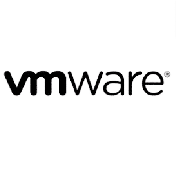Seminarinhalt
In this two-day course, you focus on building skills in configuring and performing common administrator and end-user tasks with VMware vSAN™ 6.7. You gain practical experience with vSAN production operations through the completion of instructor-led activities and hands-on lab exercises.
By the end of the course, you should be able to meet the following objectives:
Product Alignment
• ESXi 6.7
• vCenter Server 6.7
• vSAN 6.7
Hinweis: Bei kurzfristigen Buchungen, 1 Woche vor Seminarbeginn, können wir Ihren Seminarplatz leider nicht garantieren. Es kann daher zur Verzögerung bei Ihrer Anmeldebestätigung kommen.
By the end of the course, you should be able to meet the following objectives:
- Describe vSAN host operations
- Discuss vSAN networking requirements
- Define the tasks involved in hardware replacement in a vSAN cluster
- Perform vSAN cluster scale-out and scale-up operations
- Describe common vSAN maintenance operations
- Define the tasks required for updating and upgrading vSAN
- Describe vSAN security operations
- Configure a key management server (KMS) cluster
- Configure vSAN storage policies and observe the effects of a cluster-wide change
- Explain vSAN resilience and availability features
- Perform ongoing vSAN management tasks
- Use the vSAN health service to monitor health and performance
Product Alignment
• ESXi 6.7
• vCenter Server 6.7
• vSAN 6.7
Hinweis: Bei kurzfristigen Buchungen, 1 Woche vor Seminarbeginn, können wir Ihren Seminarplatz leider nicht garantieren. Es kann daher zur Verzögerung bei Ihrer Anmeldebestätigung kommen.
Programm
Course Introduction
vSAN Host and Hardware Operations
vSAN Data Availability Operations
vSAN Cluster Maintenance
vSAN Security Operations
vSAN Monitoring and Performance
- Introductions and course logistics
- Course objectives
vSAN Host and Hardware Operations
- Recognize the importance of hardware compatibility
- Ensure the compatibility of driver and firmware versioning
- Use tools to automate driver validation and installation
- Apply host hardware settings for optimum performance
- Recognize the benefits of using VMware vSphere® Distributed Switch™
- Compare the benefits of NIC teaming and Link Aggregation Control Protocol (LACP)
- Plan appropriately for networking configuration changes
- Identify ESXCLI commands and namespace options
- Recognize how to use ESXCLI commands for troubleshooting vSAN software and hardware issues
- Use Ruby vSphere Console (RVC) to get detailed information about the vSAN environment
vSAN Data Availability Operations
- Describe vSAN storage policies
- Recognize the impact of a vSAN storage policy change
- Describe and configure the Object Repair Timer advanced option
- Plan disk replacement in a vSAN cluster
- Plan maintenance tasks to avoid vSAN object failures
- Recognize the importance of backing up data in vSAN
- Describe the VMware vSphere® Storage APIs - Data Protection framework
- Recognize the importance of managing snapshot utilization in a vSAN cluster
vSAN Cluster Maintenance
- Perform typical vSAN maintenance operations
- Describe vSAN maintenance modes and data evacuation options
- Assess the impact on cluster objects of entering maintenance mode
- Determine the specific data actions required after exiting maintenance mode
- Define the steps to shut down and reboot hosts and vSAN clusters
- Migrate vSAN to a new vCenter Server instance
- Use best practices for boot devices
- Upgrade and update vSAN
- Replace vSAN hardware by using scale-in and scale-out strategies
vSAN Security Operations
- Identify differences between VM encryption and vSAN encryption
- ecognize how to perform ongoing operations to maintain data security
- Identify steps in adding an existing encrypted vSAN cluster to a new vCenter Server instance
vSAN Monitoring and Performance
- Describe how the Customer Experience Improvement Program (CEIP) enables VMware to improve products and services
- Identify the vSAN tools and health checks available for monitoring vSAN health
- Manage alerts, alarms, and notifications related to vSAN in vSphere Client
- Create and configure custom alarms to trigger vSAN health issues
- Describe the vSAN tools and services that monitor vSAN performance
- Use performance views to access metrics for monitoring vSAN clusters, hosts, and virtual machines
- Explain how the writing of data generates I/O traffic and affects vSAN performance
- Use performance metrics to analyze the vSAN environment
Zielgruppen
- Storage and virtual infrastructure administrators who are responsible for production support and administration of vSAN v6.x
Vorkenntnisse
- Understanding of concepts presented in the VMware vSphere: Install, Configure, Manage [V6.x] course
- Storage administration experience with block or file storage devices
- Completion of the VMware vSAN: Deploy and Manage [v6.7] course or equivalent experience with vSAN is desirable.
The course presumes that a student can perform the following tasks with no assistance or guidance before enrolling:
- Use VMware vSphere® Web Client
- Create and manage VMware vCenter Server® objects, such as data centers, clusters, hosts, and virtual machines
- Create and modify a standard switch
- Connect a VMware ESXi™ host to NAS, iSCSI, or Fibre Channel storage
- Create a VMware vSphere® VMFS datastore
- Use a wizard or a template to create a virtual machine
- Migrate a virtual machine with VMware vSphere® vMotion®
- Migrate a virtual machine with VMware vSphere® Storage vMotion®
If you cannot complete all of these tasks, VMware recommends that you complete this courses before enrolling in VMware vSAN: Production Operations:
- VMware vSphere: Install, Configure, Manage [V6.7] and
- VMware vSAN: Deploy and Manage [V6.7]


